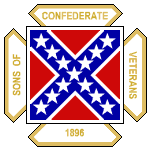
Richard Petty never raced Indy. Why?
#1

Posted 20 July 2008 - 14:25
"... I've never driven an Indy car. I was offered a ride but I didn't take it. Yeh I suppose it's strange but I just never did. Maybe I was afraid I'd like it. Built just for racing like those cars are, I'm sure they work well and feel fine.
...
I'm a race driver, like my daddy was. I'm sure if daddy had driven Indianapolis, I'd be driving Indianapolis. Whatever the risks were, I'd accept them. But daddy drove a safer form of racing and I can see how much more dangerous other racing is.
...
I've been to Indianapolis a couple of times, but I never got to see the race. I didn't like the looks of those little old June bugs. I don't know if I'd like laying on my backso close to the ground with those wheels all around me and the wind in my face.Foyt showed me the little bitty shoes he drives in even though he has feet as big as mine, He said I'd have to squeeze into the same sort of shoes because the pedals were so close together you couldn't wear big boots.
..."
The book is from 1977. Petty raced (and won) for several years after this. Don't remember whether he changed his opinion or not. But I'm pretty sure he never made the field at Indianapolis.
Why?
Richard Petty has been undoubtedly one of the fastest, strongest, hardest drivers in motorsport history. And he raced only stock-cars. Cale Yarborough, Bobby Allison, Donnie Allison, Lee Roy Yarbrough and a few other stock-car drivers raced Indy cars, without great success. Vice-versa a number of single-seater drivers came to stock-cars (and also won), Gurney, Andretti, Parnelli Jones, and now Montoya, Franchitti, Villeneuve and others. A.J. Foyt is "hors-category"...
Advertisement
#2

Posted 20 July 2008 - 20:22
In his later driving years[and after] he evidently changed his tune regarding Indy cars a little...he made several statements to the effect that open-wheel racing was something that the average fan couldn't relate to, because the cars weren't American, and didn't have anything in common with the cars that the average fan drove. He even advocated changing the Indy 500 from CART to NASCAR at one time, saying the average person wouldn't know the difference, or words to that effect.
There was a rumor that Kyle Petty wanted to go Indy racing when he was driving for Felix Sabates, but it never came to anything...Sabates DID field a car for Robby Gordon at Indy in 1997.
Bill Elliott and Geoff Bodine both tested Indycars at Michigan in the late '80's...Elliott was impressive, IIRC. I don't recall just who he drove for, though.
NASCAR was becoming more competitive after this book was written, too...and Petty's career was at it's peak at about this time. There was the upcoming CART/USAC split, too So, he was a very busy man, trying to win races in his chosen venue; too involved to risk a new venture in an area of the sport with an uncertain future.
These are just my own thoughts...
Dan
#3

Posted 20 July 2008 - 20:31
I've usually thought of NASCAR as being historically less safe than Indy Car. Am I wrong?Originally posted by Nanni Dietrich
I'm a race driver, like my daddy was. I'm sure if daddy had driven Indianapolis, I'd be driving Indianapolis. Whatever the risks were, I'd accept them. But daddy drove a safer form of racing and I can see how much more dangerous other racing is.
#4

Posted 20 July 2008 - 20:47
Probably...at least if you include the traditionally Champcar-centred subsidiary formulae like sprintcars.Originally posted by F1Fanatic.co.uk
I've usually thought of NASCAR as being historically less safe than Indy Car. Am I wrong?
Look at the 1958 500 field (the time when Petty was starting out). By my reckoning four of the top eight were killed in crashes, plus eight others in the field, including one in the race itself. At least one driver was crippled following a crash. That's a 33% casualty rate.
#5

Posted 20 July 2008 - 21:42
PS--Not sure what King Richard was getting at with Indy cars not being "American." American cars and engines of all sorts have competed and won at Indy from the very beginning. And open-wheel racing, as far as I can tell, is the first form of auto racing to take place in the US.
#6

Posted 20 July 2008 - 22:09
As for safety, six of one and a half dozen of the other -- both were dangerous and at levels that would be completely unacceptable today.
Besides, Petty had a business to run.
#7

Posted 20 July 2008 - 23:58
#8

Posted 21 July 2008 - 05:35
Originally posted by F1Fanatic.co.uk
I've usually thought of NASCAR as being historically less safe than Indy Car. Am I wrong?
There was a period from 1999 or so to 2001 that would seem to lend credence to your statement...John Nemechek, Tony Roper, Kenny Irwin, Adam Petty and Dale Earnhardt were all killed in somewhat similar accidents over this period. The HANS/Hutchens devices hopefully have put this trend to rest; it seems that NASCAR race cars suffer from what Championship cars used to do in the eqarlier days in the event of a crash...they stay rigid, and the driver tends to absorb the impact with disasterous results. The SAFER barrier has helped a tremendous amount, as well in this regard.
It seems that in NASCAR, fatalities come in spurts; Rodney Orr and Neil Bonnett both died within a few days of each other in 1994, and IIRC, in both cases the cause was traced to deficient shock mounting bolts in the rear end of each car. Adam Petty and Kenny Irwin both died at Loudon, NH from similar accidents; and again, the cause was the same, stuck throttles from sticking linkages.
Flat Black has an excellent point regarding the different skills that come into play when driving the two different types of cars. I believe it was Darrell Waltrip that remarked once that he didn't have the "finesse" needed to drive an Indy car, so he never tried it. A lot of NASCAR drivers hold Indycar drivers in high regard for their skills.
It's only my opinion, but it would seem that Tony Stewart would seem to be an heir-apparent to the mantle held by A.J. Foyt and Mario Andretti, both of whom could drive anything and win in it...and all three of them come from the same background.
Dan
Dan
#9

Posted 21 July 2008 - 09:57
Originally posted by TrackDog
So, he was a very busy man
This pretty much sums it up and he is still a very busy man.
Henry
#10

Posted 21 July 2008 - 14:03
The answer might not be any more complicated than that.
#11

Posted 21 July 2008 - 16:04
#12

Posted 21 July 2008 - 19:30
I haven't checked, but it likely comes up in both of the (fairly) recent books on these two men.
Don brought up another good point, the Pettys had a business to run. At the time, the others were primarily or solely drivers, though Bobby Allison got into the chassis business a few years later.
#13

Posted 21 July 2008 - 19:44
Minus one, Walt Faulker flipped his 1956 Ford while qualifying for a USAC Stock Car race at West Coast Speedway, Vallejo, California.Originally posted by Flat Black
Seventeen of the 33 starters from the '55 Indy 500 died on the track. All of them, I believe, in open-wheel cars. I doubt you'd find similar attrition for any Daytona 500 you chose to examine.
I'm still not convinced Cal Niday belongs on that list. I don't view heart attacks while racing as "racing fatalities", but I also realize Niday's situation is rather unique. For that matter, Johnny Boyd could belong on the list as injuries he suffered many years earlier either contributed heavily or even led directly to his passing, albeit at age 77.
It also still means that even in what was likely the worst year, 16 did not die racing. All but one or two of those living to ripe old age (beyond the average life expectancy) and overwhelmingly outliving their contemporaries from the NFL. One died in a plane crash and fortunately, 3 are still with us as of this post.
#14

Posted 21 July 2008 - 20:07
As Don, said six of one, half a dozen of another. Is it because NASCAR is perceived as more oval oriented? There was a post to another thread on TNF that I haven't had time to address, and I'm surprised Don hasn't, in which a U.K. member indicates "American oval racing" was much deadlier than road racing.Originally posted by F1Fanatic.co.uk
I've usually thought of NASCAR as being historically less safe than Indy Car. Am I wrong?
When I get the chance, and can find the time, I will address exactly what is wrong with that.
#15

Posted 21 July 2008 - 20:09
PS--In the Acknowledgments of a book called Lost Racing Tracks (or something close to that), a certain Jim Thurman is mentioned. Could that be you?
#16

Posted 21 July 2008 - 22:43
Originally posted by Flat Black
Nevertheless, a mortality rate of ca. 50% is stratospheric for any profession.
The usual manning of D Co. 36 Armd Inf was almost exactly 100 men. On 18 June 1944, Dog Co. was the first element of the 3rd Armd Div to land in France and went into action several days later as the lead element of the division's first combat. When the war ended in early May, the number of men who had served in Dog Co. was approximately 880 men, with nearly a dozen company commanders in the meantime. The only ways to leave the company during this time was through being killed or wounded badly enough to be evacuated to the rear; there were very few transfers of personnel out of the company, less than half a dozen. The first company commander of the company in France was Captain L.M. "Jack" Cook, my late father-in-law. He lasted until early August when he was severely wounded taking out a tank during a night counter-attack. He had already destroyed one and damaged another when he was wounded, almost dying before he reached the aid station, due to his refusing to leave the company until the attack was successfully thrown back.
Just a bit of perspective.
#17

Posted 22 July 2008 - 02:40
#18

Posted 22 July 2008 - 07:18
Originally posted by Flat Black
Nevertheless, a mortality rate of ca. 50% is stratospheric for any profession. By any measure, American open wheel racing in the mid to late fifties was ungodly dangerous. Was it the most dangerous period/type of racing ever? That is a good question and one that TNFers more knowledgeable than me might be able to answer.
PS--In the Acknowledgments of a book called Lost Racing Tracks (or something close to that), a certain Jim Thurman is mentioned. Could that be you?
What about the '30's? It was "desperation time" for a lot of drivers who got the rare chance to drive any race car, much less a top-quality ride since money was so tight. Also, that was the era that prompted William Randolph Hearst to decry the carnage on America's race tracks in his newspapers. I'm not saying it was more dangerous to drive then compared to the '50's; but it would seem that it might be that there were more fatalities in the '30's due to riding mechanics being mandatory at a lot of races, and the relatively inferior tire and mechanical[read: lubricant, metallurgiucal, etc] technology; not to mention the do-or-die nature of the drivers who had to produce results quickly to satisfy car owners and sponsors.
Dan
#19

Posted 22 July 2008 - 11:11
Originally posted by Flat Black
Then again, open wheel race car drivers in the fifties were generally not drafted into the sport.
No, but many were drafted.
Is this becoming another Wisconsin Death Trip discussion?
Advertisement
#20

Posted 22 July 2008 - 17:15
"Lost Race Tracks" by Gordon E. White.Originally posted by Flat Black
PS--In the Acknowledgments of a book called Lost Racing Tracks (or something close to that), a certain Jim Thurman is mentioned. Could that be you?
(in my best Bob Newhart as Dick Loudon) That...that...would be me.
#21

Posted 22 July 2008 - 21:00
And, he is still a very busy man and deserves every check!
Henry
#22

Posted 23 July 2008 - 01:08


















